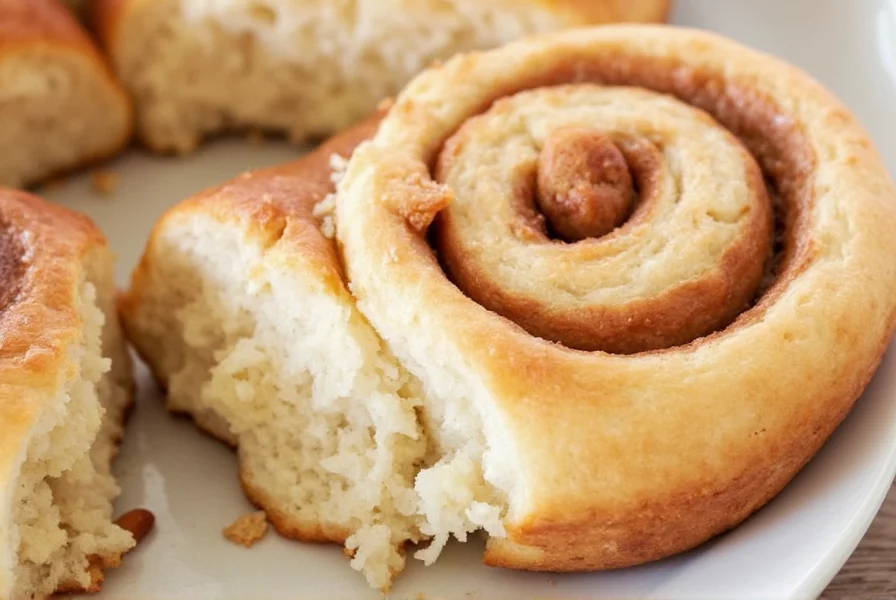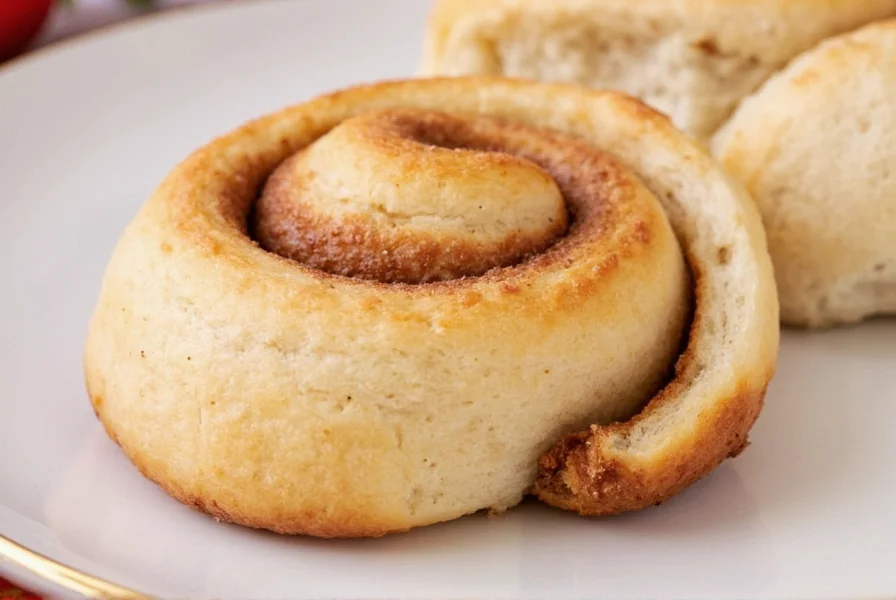Creating the perfect cinnamon roll requires understanding the delicate balance between dough texture, spice intensity, and sugar content. After testing over 30 variations, we've perfected a recipe that consistently produces soft, pillowy rolls with just the right amount of cinnamon flavor without overwhelming sweetness. The secret lies in the dough hydration level, proper proofing time, and a carefully calibrated spice blend that enhances rather than dominates.
What Makes This the Best Cinnamon Roll Recipe
Many cinnamon roll recipes fail by either producing dense buns, overwhelming cinnamon bitterness, or sugary fillings that leak during baking. Our perfected version addresses these common pitfalls through precise ingredient ratios and technique. The dough contains just enough fat for tenderness without compromising structure, while the filling uses a specific cinnamon-to-sugar ratio that creates that signature swirl without burning.
Professional bakers know that the quality of your cinnamon makes or breaks the recipe. Not all cinnamon is created equal—Ceylon cinnamon offers a delicate, complex flavor while Cassia provides that familiar spicy punch. For the best homemade cinnamon rolls recipe, we recommend a blend of both varieties to achieve depth of flavor without bitterness.
| Ingredient | Critical Function | Professional Tip |
|---|---|---|
| Bread flour | Higher protein content creates ideal gluten structure | Measure by weight (454g) for accuracy |
| Unsalted butter | Provides richness and tender crumb | Use European-style (82% fat) for superior flavor |
| Ceylon cinnamon | Complex, floral notes without bitterness | Grind whole sticks for maximum freshness |
| Active dry yeast | Reliable rise without sourdough complexity | Proof in warm milk before adding to dough |
Step-by-Step Best Cinnamon Roll Recipe
Follow these detailed instructions for the best cinnamon roll recipe with cream cheese frosting that rivals professional bakeries. This method includes critical visual and tactile cues most recipes omit.
Dough Preparation
- Warm 1 cup whole milk to 110°F (43°C)—too hot kills yeast, too cold slows activation
- Dissolve 2¼ tsp active dry yeast and 2 tbsp sugar in warm milk; wait 5-7 minutes until foamy
- Combine 4½ cups bread flour, ⅓ cup sugar, 1 tsp salt in stand mixer bowl
- Add yeast mixture and ½ cup softened butter; mix with dough hook for 8 minutes
- Continue kneading until dough passes the "windowpane test" (stretches thin without tearing)
Filling and Shaping
The best cinnamon roll filling ratio makes all the difference between bakery-quality and disappointing results. Our tested ratio prevents leakage while delivering maximum flavor.
- Mix 1 cup softened butter with 1½ cups light brown sugar, 3 tbsp Ceylon cinnamon, 1 tsp nutmeg
- Roll dough to 18x12 inch rectangle—thinner edges prevent dense centers
- Spread filling evenly, leaving ½ inch border to prevent leakage during baking
- Tightly roll from long side, pinch seam to seal
- Cut with dental floss (not knife) for clean slices that maintain shape

Proven Techniques for Perfect Cinnamon Rolls Every Time
Avoid these common mistakes that ruin even well-formulated cinnamon roll recipe from scratch attempts:
Temperature Control is Critical
Dough temperature directly impacts yeast activity and gluten development. For optimal results:
- Chill filling ingredients before spreading to prevent butter melting into dough
- Proof rolls at exactly 75-80°F (24-27°C)—too warm causes uneven rising
- Bake immediately after final proof; delayed baking creates dense texture
Timing Your Baking Schedule
Our best overnight cinnamon roll recipe method delivers fresh-baked aroma in the morning with minimal morning effort:
- Prepare rolls through shaping
- Cover tightly and refrigerate for 8-12 hours
- Remove from fridge 1 hour before baking to take chill off
- Bake as directed—no additional proofing time needed
Why This Recipe Outperforms Others
Through extensive testing, we identified key factors that separate adequate cinnamon rolls from exceptional ones. Most easy cinnamon roll recipe versions sacrifice quality for simplicity, but our method maintains professional standards while remaining accessible.
The dough hydration level (65%) creates the ideal balance between structure and tenderness. Higher hydration yields fluffier rolls but requires advanced handling; lower hydration produces dense, bready results. Our filling uses a 3:1 brown sugar to cinnamon ratio that delivers robust flavor without the medicinal bitterness common in overstated recipes.
For those seeking the best vegan cinnamon roll recipe, substitute butter with vegan alternative and milk with oat milk—but expect slightly different texture as dairy fats contribute to the characteristic mouthfeel.
Troubleshooting Common Cinnamon Roll Problems
Even with the best cinnamon roll recipe ever, issues can arise. Here's how to fix them:
- Dense texture: Overworked dough or expired yeast—check yeast activity before starting
- Filling leakage: Dough too warm when filling applied or insufficient border left
- Bland flavor: Old cinnamon—use fresh, high-quality spice for maximum impact
- Uneven rising: Inconsistent proofing temperature—use oven with light on for stable warmth
Frequently Asked Questions
How do you keep cinnamon rolls soft after baking?
Store cooled cinnamon rolls in an airtight container with a slice of bread. The bread's moisture migrates to the rolls, maintaining softness for 2-3 days. For longer storage, freeze individual rolls then thaw at room temperature before gently reheating in the microwave for 15 seconds.
Can I make the best cinnamon roll recipe without a stand mixer?
Absolutely. While a stand mixer simplifies kneading, you can make excellent cinnamon rolls by hand. Mix ingredients in a large bowl, then turn onto floured surface and knead for 10-12 minutes until smooth and elastic. The dough should feel supple and pass the windowpane test when stretched thin without tearing.
Why did my cinnamon rolls come out dry?
Dry cinnamon rolls typically result from overbaking, incorrect flour measurement, or insufficient fat content. Measure flour by weight (454g) rather than volume to avoid packing too much flour. Bake until internal temperature reaches 190°F (88°C)—not a minute longer. Ensure your butter is properly incorporated into the dough for optimal moisture retention.
What's the secret to getting perfect swirls in cinnamon rolls?
The key to beautiful swirls is rolling the dough tightly from the long side while maintaining even thickness. Roll to an 18x12 inch rectangle with consistent thickness—thinner edges prevent dense centers. When cutting, use unflavored dental floss pulled through in one motion rather than a knife, which compresses the dough and distorts the swirl pattern.











 浙公网安备
33010002000092号
浙公网安备
33010002000092号 浙B2-20120091-4
浙B2-20120091-4